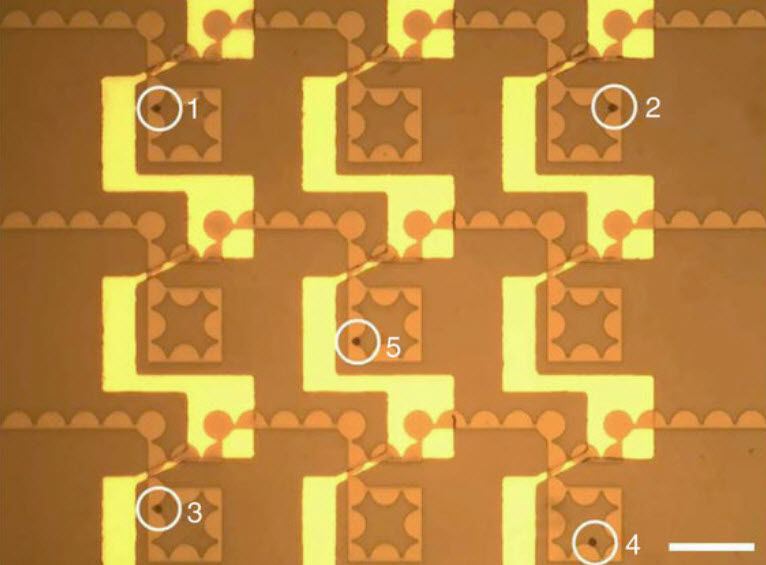
15th May 2014 Microchip-like technology allows single-cell analysis Using components similar to those that control electrons in microchips, researchers have designed a new device that can sort, store, and retrieve individual cells for study.
An international research team has developed a chip-like device that could be scaled up to sort and store hundreds of thousands of individual living cells in a matter of minutes. The chip is similar to random-access memory (RAM), but moves cells rather than electrons. It is hoped the cell-sorting system will revolutionise medical research by allowing the fast, efficient control and separation of individual cells, which could then be studied in vast numbers. “Most experiments grind up a bunch of cells and analyse genetic activity by averaging the population of an entire tissue rather than looking at the differences between single cells within that population,” says Benjamin Yellen, associate professor at Duke University's Pratt School of Engineering. “That’s like taking the eye colour of everyone in a room and finding that the average colour is grey, when not a single person in the room has grey eyes. You need to be able to study individual cells to understand and appreciate small but significant differences in a similar population.” Yellen and his collaborator – Cheol Gi Kim, from the Daegu Gyeongbuk Institute of Science and Technology (DGIST) in South Korea – printed thin electromagnetic components like those found on microchips onto a slide. These patterns create magnetic tracks and elements like switches, transistors and diodes to guide magnetic beads and single cells tagged with magnetic nanoparticles through a thin liquid film. Like a series of small conveyer belts, localised rotating magnetic fields move the beads and cells along specific directions etched on a track, while built-in switches direct traffic to storage sites on the chip. The result is an integrated circuit that controls small magnetic objects much like the way electrons are controlled on computer chips.
In their study, the engineers demonstrate a 3-by-3 grid of compartments that allow magnetic beads to enter but not leave. By tagging cells with magnetic particles and directing them to different compartments, the cells can be separated, sorted, stored, studied and retrieved. In a random-access memory chip, similar logic circuits manipulate electrons on a nanometre scale, controlling billions of compartments in a square inch. Cells are much larger than electrons, however, which would limit the new devices to hundreds of thousands of storage spaces per square inch. But Yellen and Kim say that’s still plenty small for their purposes. “You need to analyse thousands of cells to get the statistics necessary to understand which genes are being turned on and off in response to pharmaceuticals or other stimuli,” said Yellen. “And if you’re looking for cells exhibiting rare behavior, which might be one cell out of a thousand, then you need arrays that can control hundreds of thousands of cells.” “Our technology can offer new tools to improve our basic understanding of cancer metastasis at the single cell level, how cancer cells respond to chemical and physical stimuli, and to test new concepts for gene delivery and metabolite transfer during cell division and growth,” said Kim. They now plan to demonstrate a larger grid of 8-by-8 or 16-by-16, then scale it up to hundreds of thousands of compartments with cells. If successful, their technology would lend itself well to manufacturing, giving scientists around the world access to single-cell experimentation. “Our idea is a simple one,” said Kim. “Because it is a system similar to electronics and is based on the same technology, it would be easy to fabricate. That makes the system relevant to commercialisation.” The study was published online yesterday in Nature Communications.
Comments »
|







